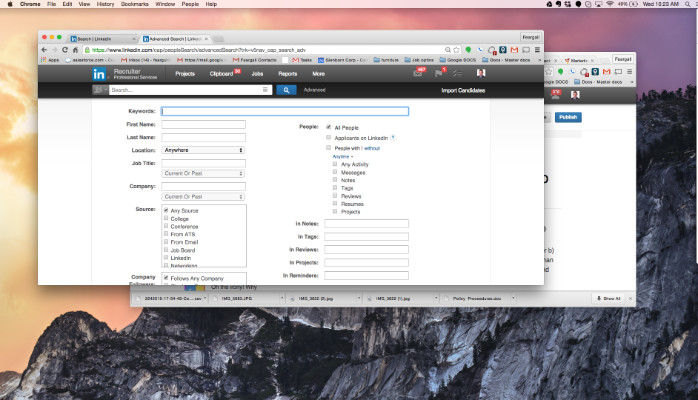Given the news of some more layoffs this week, here is a simple guide on taking control of a search if you are new to the market. This isn’t rocket science. In fact, there are crazy parallels to a seller’s day job…
Identify your target companies & create a list
In order to be a match in the eye of the beholder, focus in on the roles for which you are a logical fit. Assuming that function (sales), comp (often shared upfront these days) and seniority align, you will reduce friction when you target firms that are EITHER in the same industry or adjacent industry areas as your most recent role OR selling to the same persona/industry vertical OR, PREFERABLY, both. So hone in on companies that are in adjacent spaces selling to the same chain of commands and verticals. If you cant get both, make sure at least one is in alignment. If neither is there, you are adding massive friction to your search.
Filter those targets.
Refine the list above to reflect those that are actually hiring for roles that you are a match for.
Start Outreach & Bypass gatekeepers
Open roles are being swamped with applicants at the moment – if look at any open role on Linkedin they actually show you the raw numbers of applicants for that role and sometimes the sheer numbers can be alarming. Take comfort that most of these applicants aren’t remotely a fit – they are simply clicking “apply” because it is easy to do without thinking of whether they are a match. If you are indeed a true fit (see #1 above) you are going to be buried in that pile of largely unqualified applicants. Instead, identify the hiring manger, use Linkedin to identify trusted intermediaries (including recruiters), and ask them if they can introduce you to the hiring manger for that specific role.
In-person networking
* Broader networking –
Start going back to in person events in your industry or functional areas. Meet people. Ask about open roles. Follow up.
* One-on-one networking with former mentors, bosses and peers –
Articulate what you are looking for. Be specific. Make sure those ideas are logical and fit with the approach #1 above. Follow up with an actual list of your target firms and ideal roles so they can look out for you when the time is right. This makes you memorable. The listener hears that you know what you want and will remember how specific you were when you met. If you try and cover too many bases you just make yourself more forgettable and it makes it harder for 3rd parties to listen out for you.
Getting proactive about being more effective for inbound inquiries.
Target 3rd party recruiters.
This is news to some people but, recruiters like me and my colleagues at Glenborn, are actually client- not candidate-driven. We typically approach you when we have something that matches your skillset (see #1 above). We do still like candidates to approach us that are generally in our zone so, worst-case scenario, we can keep an eye out for you if we don’t have a direct match currently and potentially give you advice at the same time. So how do you spot recruiters that align with your functional, industry, and vertical/persona focus?
a. Inmail inbox. Look through your inMail archive. See which recruiters consistently reach out to you for roles. Filter for those that tailor their messages and look to get the industry areas that you are in.
b. Breadcrumbs. Check which recruiters have been consistently looking at your Linkedin profile.
c. Intermediaries. See #3 in the prior post (#1 of 2). When being proactive in identifying intermediaries for target firms, look for which recruiters consistently appear as intermediaries between you and the companies you are interested in.
2. Make sure you are proactively setting up your Linkedin profile to be found by internal and external recruiters. Here’s an article from our archives on that – https://lnkd.in/epW6prWf and a post from last week with a quick slideshow – https://lnkd.in/epRBiCtg

